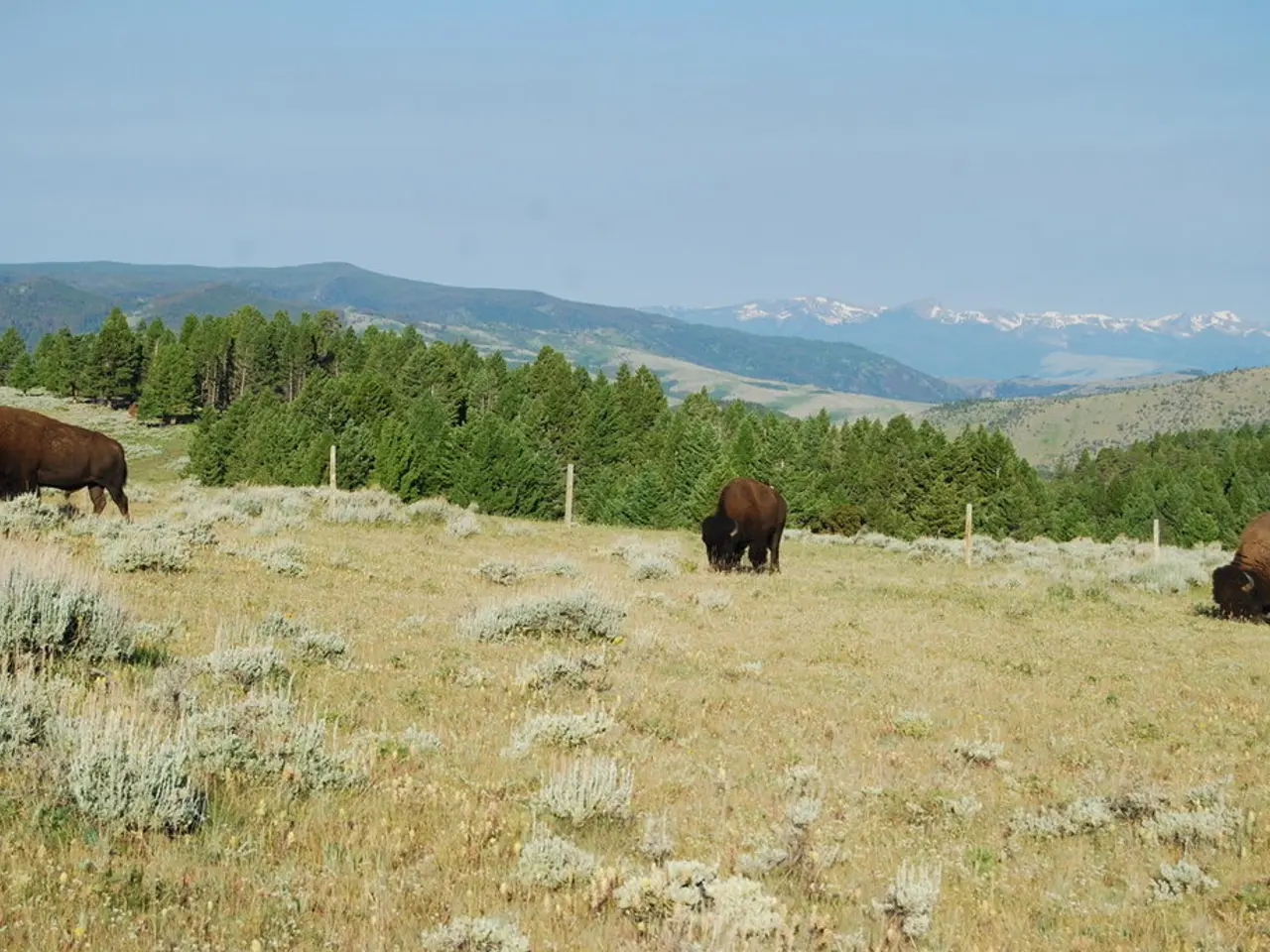Top 6 Spectacular Locations for Capturing Wildlife in Their Natural Habitat Globally
The world's diverse wildlife offers photographers a wealth of opportunities to capture breathtaking images. Here are some of the top destinations and equipment recommendations for wildlife photography in 2025.
In the heart of Botswana lies the Okavango Delta, a favourite destination for wildlife photographers. With high concentrations of various mammals and scenic backdrops, it provides dramatic contrast, especially during golden hour. Accommodations like Chief's Camp and Leroo La Tau offer wildlife viewing opportunities.
Brazil's Pantanal, the largest freshwater wetland in the world, is another hotspot for wildlife photography. Home to tapirs, giant anteaters, capybaras, hyacinth macaws, and a large concentration of jaguars, it offers a unique and diverse range of subjects. Caiman Lodge, located in the state of Mato Grosso do Sul, provides access to a private nature reserve and safari trips with conservationists.
For those seeking to photograph brown bears, Alaska Bear Camp in South-central Alaska is an ideal choice. Run by Natural Habitat Adventures, it offers wildlife photography workshops and is known for its large populations of bears. Katmai National Park, particularly famous for its salmon run, attracts large numbers of bears.
For underwater wildlife photography, a separate gear set is required. The Galapagos Islands, Ecuador, offer a diverse range of species such as blue-footed boobies, giant tortoises, and sea lions, making it a prime destination for this type of photography.
When it comes to equipment, cameras with fast burst rates, reliable autofocus, good weather sealing, and strong battery life are recommended. The Sony A7RIV, Nikon Z9, Sony A1 II, Canon EOS R8, and Canon R7 are some top choices. A versatile telephoto lens, such as the Sony 100-400mm f/4.5-5.6, is essential due to the unpredictability and distance of animals.
The type of wildlife determines the necessary lens. For example, a safari may require a telephoto lens, while an outing for tiny insects would necessitate a macro lens. Crop sensors like the Canon R7’s APS-C sensor effectively extend the focal length, which is advantageous when shooting skittish animals.
Memory cards with quick write speeds and high capacity are crucial for handling high burst rates and buffer clearing, especially with high-resolution cameras. Carry multiple memory cards and rotate usage to avoid data loss.
Useful accessories include sturdy, weather-resistant tripods or monopods for stability; extra batteries for extended outdoor shooting; weather protection gear for the camera; and possibly remote triggers. Lightweight equipment is preferable for long field sessions.
In the off or shoulder seasons in Kangaroo Island, South Australia, it's important to bring dry bags and a rain cover for the camera backpack due to unpredictable weather. Southern Ocean Lodge, a clifftop resort on Kangaroo Island, offers animal adventures and a chance to photograph seals, koalas, kangaroos, wallabies, and rainbows.
For whale photography, Baja Sur, Mexico, is a popular destination. Various species, including gray, blue, fin, sperm, humpbacks, and orcas, visit from late December to early April. Loreto in Baja Sur is a location for whale photography, with an overnight detour to gray-whale hub Puerto Adolfo Lopez Mateos.
World Expeditions offers wildlife photography trips to the Galapagos Islands. The SanDisk Extreme Portable SSD is an example of an external SSD used for backing up content during travel.
In summary, a recommended wildlife photography setup in 2025 would be a mirrorless camera with excellent autofocus and burst speed, such as the OM System OM-1 Mark II or Canon R7, paired with a telephoto lens (100-400mm or longer), fast and multiple memory cards, and practical accessories including support gear and weather protection to ensure reliability in harsh outdoor environments.
- A visit to Botswana's Okavango Delta, known for its diverse wildlife and breathtaking landscapes, is ideal for a lifestyle that cherishes photography, offering opportunities for capturing dramatic images during golden hour.
- For individuals seeking to capture the unique and diverse range of wildlife in Brazil's Pantanal region, Caiman Lodge, with its access to private nature reserves and safari trips, offers a perfect home-and-garden-like setting for those eager to expand their travel experiences.
- During a whale photography trip to Mexico's Baja Sur, photographers can capture images of various species, from grays to humpbacks, using equipment such as the World Expeditions' recommended gear, like the OM System OM-1 Mark II or Canon R7, coupled with a telephoto lens and practical accessories.





